iPhone 13 vs. iPhone 13 Pro: Key Differences Explained
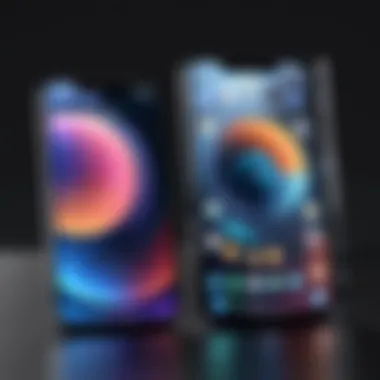
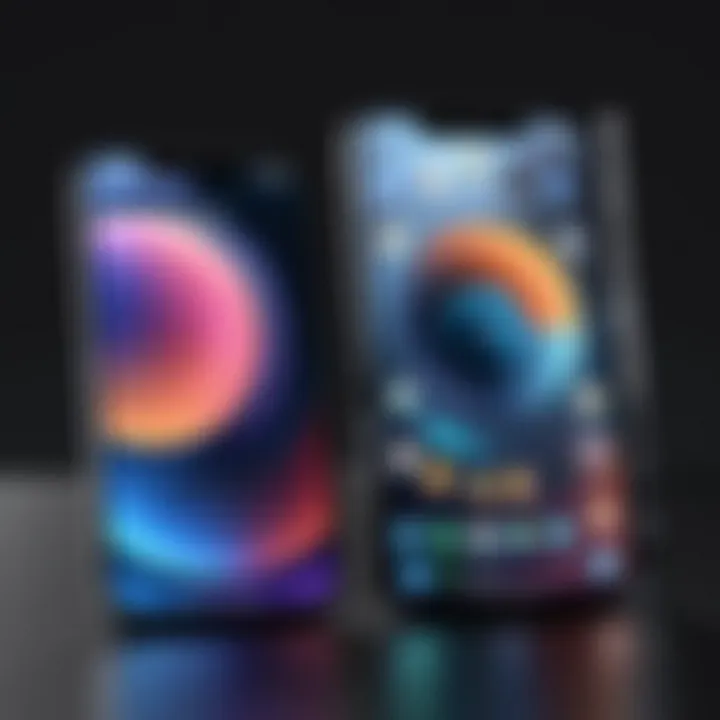
Intro
In the rapidly evolving smartphone market, choosing the right device involves analyzing numerous factors. With the launch of the iPhone 13 and iPhone 13 Pro, Apple has provided technology enthusiasts and consumers with compelling options. Each model offers unique features that cater to different user needs. Understanding the nuances between these two devices can significantly influence purchasing decisions. This article will delve into the core distinctions in technology, design, and usability.
Overview of the Technology
Key specifications
Both the iPhone 13 and iPhone 13 Pro are built on Apple's advanced A15 Bionic chip. This ensures high performance for both models. However, the Pro version has an additional 5-core GPU, which enhances its graphics capabilities, making it ideal for gaming and demanding apps. The display differs as well; the iPhone 13 features a Super Retina XDR display with a maximum brightness of 800 nits, while the iPhone 13 Pro boasts ProMotion technology, allowing for a refresh rate of up to 120Hz.
Unique selling points
The iPhone 13 aims to provide a solid experience for everyday users. It offers reliable performance, efficient battery life, and a variety of color options. Contrarily, the iPhone 13 Pro is geared towards users seeking advanced functionalities. The key selling points of the Pro model include the enhanced camera system with a triple-lens setup and ProRAW photo capabilities. This makes it particularly suited for photography enthusiasts wanting more control over their images.
Design and Build Quality
Material used
When discussing the design, it is essential to note the material differences. The iPhone 13 features an aluminum frame, which provides a sleek and lightweight feel. The iPhone 13 Pro, on the other hand, utilizes surgical-grade stainless steel, elevating its durability and premium look. The back is covered with Ceramic Shield glass on both models, ensuring protection against scratches and drops.
Ergonomics and usability
In terms of usability, both models maintain design consistency inherited from their predecessors. The iPhone 13 and iPhone 13 Pro are easy to handle, but the slightly heavier weight of the Pro model can lend a more robust feel. The button placement is identical, offering a familiar experience for previous iPhone users. Many may find the tactile feedback and responsiveness of these physical buttons to be satisfactory.
"Understanding the differences between the iPhone 13 and iPhone 13 Pro is key to appreciating what each model offers to its users."
Design Comparisons
The design of a smartphone often influences consumer choice significantly. Aesthetics, materials, and size play essential roles in daily usage and long-term satisfaction. This section aims to highlight the distinctions between the iPhone 13 and the iPhone 13 Pro, offering insights into their structural and visual elements. Understanding these differences can lead to a more informed decision when selecting a device that suits personal preferences and needs.
Build Materials
The iPhone 13 utilizes a glass front and back, combined with an aluminum frame that contributes to its lightweight feel. This choice makes it more affordable while still offering a premium look. In contrast, the iPhone 13 Pro upgrades to surgical-grade stainless steel, which enhances durability and lends a more luxurious feel. The materials used in both devices influence their weight and handling characteristics, which is vital for those who prioritize tactile experience.
"The choice of materials not only affects the aesthetic appeal but also the resilience of the device."
Dimensions and Weight
When comparing sizes, the dimensions of both devices are quite similar. However, the iPhone 13 Pro is slightly heavier. This added weight is attributed to the superior materials used in its build.
The iPhone 13 measures 146.7 x 71.5 x 7.65 mm and weighs 174 grams. On the other hand, the iPhone 13 Pro measures the same in dimensions but weighs a tad more at 204 grams. This difference may not be noticeable for all users but can influence comfort during long hours of usage.
Color Options
Aesthetic appeal in color options can be a deciding factor for many consumers. The iPhone 13 comes in several vibrant colors, including Starlight, Midnight, Blue, Pink, and Green, appealing to those who prefer lighter, more playful tones. The iPhone 13 Pro, however, is available in more muted colors such as Graphite, Gold, Silver, and Sierra Blue. These choices cater to different user preferences, whether seeking bold expressions or a more sophisticated appearance.
Both lines offer distinctive appeal in their designs, yet the choices reflect different target audience needs. Whether one favors a playful color scheme or a refined metallic finish can significantly influence their purchase decision. Understanding these design differences ensures the selected device aligns with lifestyle and personal taste.
Display Technologies
Display technology is a key aspect that differentiates the iPhone 13 and iPhone 13 Pro. It impacts how users interact with the device, influencing everything from media consumption to gaming experiences. Understanding the various display elements can help potential buyers decide which model aligns best with their preferences.
Screen Size
Both the iPhone 13 and iPhone 13 Pro feature a 6.1-inch Super Retina XDR display. This size strikes a balance between portability and viewability, making it suitable for various activities like browsing, streaming, and gaming. The uniformity in screen size means both devices offer a similar experience regarding spatial use. However, the iPhone 13 Pro has a slightly more advanced display technology, which impacts the overall experience. Many users also appreciate the vibrant colors and deep blacks that the OLED technology provides, which enhances media viewing. This consistency can appeal to someone looking for a standard size without drastic differences between models.
Brightness Levels
Brightness levels are essential for usability in different environments. The iPhone 13 Pro provides higher peak brightness at 1,200 nits for HDR content compared to the maximum of 800 nits offered by the iPhone 13. This enhanced brightness is particularly beneficial for users who often use their devices outdoors or in bright lighting conditions. Additionally, the adaptive brightness feature on both devices ensures that screen visibility is adjusted according to the surrounding environment. However, users may find that the Pro model gives a more luxe experience when watching HDR movies or playing games that take advantage of its capabilities.
ProMotion Technology
One of the standout features of the iPhone 13 Pro is its ProMotion technology, which allows for a refresh rate of up to 120Hz. This results in smoother scrolling and more responsive touch capabilities. While the iPhone 13 operates at a standard 60Hz, which is adequate for everyday tasks, the enhanced refresh rate of the Pro model can significantly impact experiences like gaming or fast-paced video content. Users may perceive the iPhone 13 Pro as more fluid and engaging, particularly when navigating through apps or scrolling through social media feeds. The difference is noteworthy for those who value speed and responsiveness in their devices.
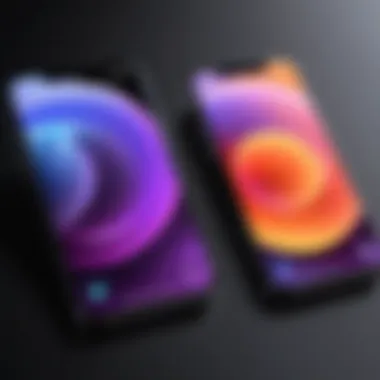
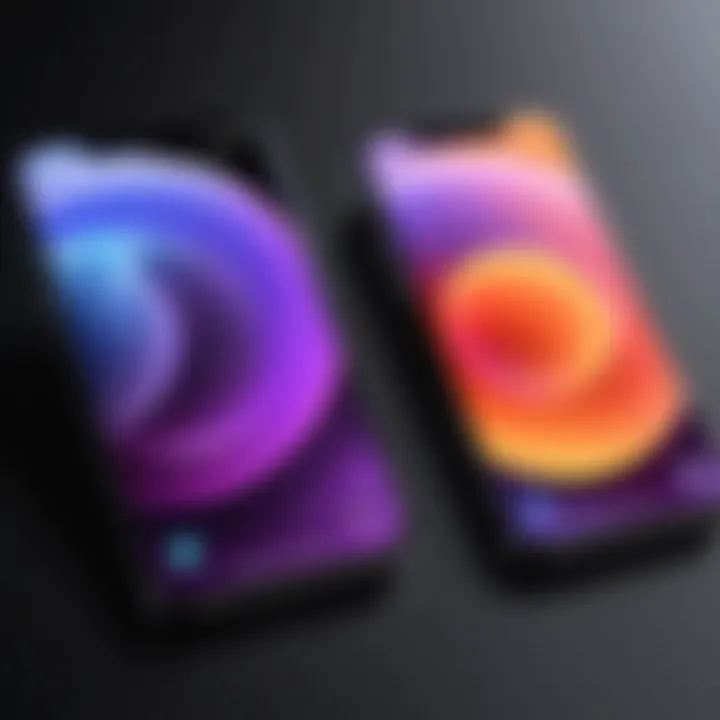
"The ProMotion technology on the iPhone 13 Pro elevates the user experience with a smoother interface and enhanced interactivity."
Performance Specifications
Understanding the performance specifications of the iPhone 13 and iPhone 13 Pro is crucial for buyers who seek optimized functionality and speed. The performance of a smartphone significantly affects how seamless and responsive the user experience is, particularly for demanding tasks like gaming and video editing. Both models feature advanced hardware that enhances their capabilities, but there are notable differences in specifications that could influence a consumer’s choice. Key aspects include processor power, RAM size, and available storage options. These elements not only define the speed and efficiency of everyday operations but also impact long-term usability as applications become more demanding.
Processor Comparison
The iPhone 13 and iPhone 13 Pro are powered by Apple’s A15 Bionic chip, which offers remarkable performance improvements over previous models. However, there is a subtle yet important difference between the two:
- The iPhone 13 has a 4-core GPU while the iPhone 13 Pro has a 5-core GPU. This distinction allows the Pro model to handle more demanding graphics tasks, making it better suited for gaming and professional applications.
- Both models feature the same 6-core CPU, which ensures speedy processing across the board.
In practical terms, the difference in GPU cores leads to better graphical performance on the iPhone 13 Pro, particularly in gaming and high-definition video rendering, making it a better choice for users who prioritize multimedia applications.
RAM Availability
The RAM in smartphones often dictates how many applications can run smoothly at the same time. The iPhone 13 comes with 4GB of RAM, which is sufficient for general use and multitasking. In contrast, the iPhone 13 Pro offers 6GB of RAM:
- The increased RAM in the Pro model allows for more efficient multitasking. Users can switch between apps without experiencing lag or slowdowns.
- This extra memory can also benefit advanced features like enhanced photo editing or video processing, providing a smoother experience for creative professionals.
Thus, for those who frequently run multiple apps or perform intensive tasks, the iPhone 13 Pro offers a clearer advantage.
Storage Options
When it comes to storage, Apple has designed both models to cater to various user needs. The iPhone 13 offers storage options of 128GB, 256GB, and 512GB. In comparison, the iPhone 13 Pro provides additional flexibility with an option for 1TB of storage:
- iPhone 13: 128GB, 256GB, 512GB
- iPhone 13 Pro: 128GB, 256GB, 512GB, and 1TB
This variety is crucial for users who frequently capture large files, such as high-resolution images and 4K videos. The iPhone 13 Pro’s additional storage option makes it more appealing to professionals and content creators who require ample space for their work.
"Choosing between these storage options is essential, especially for individuals who rely on their devices for work or entertainment that requires extensive file management."
In summary, performance specifications play a pivotal role in distinguishing the iPhone 13 from the iPhone 13 Pro. The differences in processing power, RAM availability, and storage options can guide consumers toward a model that best fits their needs, whether it’s for casual usage or professional requirements.
Camera Systems Analysis
The Camera Systems Analysis section is vital in differentiating between the iPhone 13 and iPhone 13 Pro. Both smartphones possess impressive camera capabilities, but their functionalities diverge significantly. Understanding these differences allows consumers to select the device that best suits their needs, especially for those who prioritize photography and videography.
Smartphone cameras have become a deciding factor in purchasing decisions. This part of the article will delve into the essentials of each model’s rear and front cameras, low-light performance, and video capabilities. By examining these features closely, readers can appreciate the practical impact of these specifications on their user experience.
Rear Camera Configuration
The rear camera configuration is one of the most significant differentiators. The iPhone 13 features a dual-camera system, consisting of a 12 MP wide and a 12 MP ultra-wide lens. This setup is more than capable for everyday photography, providing good quality images thanks to Night mode and Smart HDR.
On the other hand, the iPhone 13 Pro includes an additional telephoto lens, creating a triple-camera setup with a 12 MP wide, a 12 MP ultra-wide, and a 12 MP telephoto lens. This variation allows for improved versatility. It gives users the ability to zoom in without sacrificing quality. The telephoto lens supports a three times optical zoom, which is useful for capturing distant subjects with clarity.
Low-Light Performance
Low-light performance is crucial for photography enthusiasts. The iPhone 13 offers decent low-light capabilities, thanks to its Night mode. This feature automatically activates in low-light conditions, allowing the device to capture bright, clear images. However, the iPhone 13 Pro enhances this experience further. It includes an advanced sensor-shift optical image stabilization in its wide lens, which reduces blurriness during night shots. Furthermore, its additional lens enables brighter and sharper images under challenging lighting conditions.
Video Recording Capabilities
Video recording is another area where the models diverge significantly. Both iPhone 13 and iPhone 13 Pro can shoot 4K videos, but the Pro model offers additional features such as ProRes video recording. ProRes provides higher color fidelity and allows more flexibility in post-production. Additionally, the iPhone 13 Pro supports Dolby Vision HDR video recording, while the iPhone 13 only supports HDR. This difference may better serve users looking for professional-grade video options.
Front Camera Features
The front cameras on both models are nearly identical, with a 12 MP sensor and features like Night mode and Deep Fusion. However, the Pro model's front camera can record in Dolby Vision HDR. This feature enhances the quality of videos taken in challenging light, which is beneficial for vloggers and social media content creators. Another important distinction is that the iPhone 13 Pro also supports FaceTime in 4K, offering clearer and more detailed video calls.
Battery Life and Charging
The significance of battery life and charging cannot be understated when evaluating a smartphone. For users, the ability to rely on their device throughout the day hinges heavily on battery capacity and efficient charging solutions. This section examines how the iPhone 13 and iPhone 13 Pro perform in these areas, thus empowering potential buyers to make informed decisions.
Battery Capacity
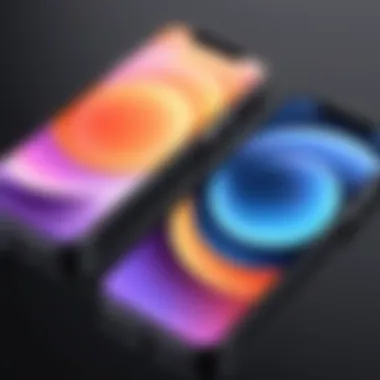

The battery capacity of the iPhone 13 is rated at 3279 mAh, while the iPhone 13 Pro has a slightly larger battery with a capacity of 3095 mAh. The difference in capacity is not vast, but it can impact performance over long periods. Generally, this means that the iPhone 13 can potentially offer longer usage hours under normal conditions compared to the Pro model, especially in tasks that are less demanding.
The iPhone 13 Pro, however, compensates this with its ProMotion technology that optimizes battery usage based on the displayed content. This technology can adjust the refresh rate dynamically, resulting in a more efficient battery consumption depending on whether you're scrolling through a feed or watching a video. So while the Pro model has a lower capacity, its software features can enhance perceived battery performance.
Charging Speed
When it comes to charging speed, both models support fast charging capability. The iPhone 13 and iPhone 13 Pro both can reach up to 50% charge in around 30 minutes using a 20W adapter or higher. However, the charging speed can be affected by the choice of charging accessories, such as not using the cable included with the phones or opting for third-party chargers.
Additionally, both phones are compatible with wireless charging, allowing for flexibility in how users choose to power their devices. MagSafe technology, available in both models, provides a magnetic alignment for easier attachment of charging accessories, offering efficient wireless charging up to 15W.
Battery Life Tests
Battery life tests show varied results depending on user behavior and settings. Under optimal conditions, the iPhone 13 can deliver up to 15 hours of internet use, while the iPhone 13 Pro offers around 14 hours. The difference is minimal, but for heavy users, the extra hour can be valuable.
In real-world usage tests, both phones manage well with daily tasks such as browsing, streaming, and app usage. What significantly affects battery life is the usage of advanced features such as gaming or video editing, especially on the Pro model due to its higher performance capabilities.
"Battery efficiency counts for significant user satisfaction; knowing how long devices last can affect daily usability greatly."
In summary, while the battery specifications show minor differences between the iPhone 13 and iPhone 13 Pro, charging speed and real-life performance under various conditions provide a fuller picture. Understanding these aspects helps consumers choose based on their personal usage needs.
Software Features
In today's smartphone market, software features play a crucial role in determining the overall user experience of a device. Both the iPhone 13 and iPhone 13 Pro run on Apple's iOS operating system, but the enhancements and distinct functionalities in these software offerings can significantly affect how users interact with their gadgets. Understanding these software features provides insight into what each model offers, thereby assisting users in making an informed decision.
Operating System Version
As of their release, both the iPhone 13 and iPhone 13 Pro come with iOS 15. This version of the operating system introduces various improvements and new features designed to optimize the performance and usability of the devices. For instance, functionalities such as Focus mode help users manage notifications based on their activities.
Moreover, iOS 15 offers enhanced FaceTime features, including spatial audio, making conversations feel more natural. The introduction of SharePlay allows users to enjoy content together over FaceTime, bridging the gap for shared experiences despite physical distances. These improvements greatly enhance the interaction users have with their devices, enriching the overall experience.
Exclusive Features
While both models share the foundational aspects of iOS 15, the iPhone 13 Pro includes certain exclusive software features that take advantage of its advanced hardware. One notable exclusive feature is the ProRAW and ProRes formats for photography and video. This enables users to capture high-quality images and videos with a greater level of detail and editing flexibility, catering to photography enthusiasts.
Additionally, the iPhone 13 Pro supports the ability to use the ProMotion technology in its display, allowing for smoother animations and more responsive touch interactions. This technology not only enhances the visual experience but also makes scrolling, gaming, and multitasking noticeably smoother.
User Interface Differences
The user interface between the iPhone 13 and iPhone 13 Pro reflects their different target user bases, although largely built on the same foundation of iOS 15. While both devices feature the same grid layout for apps and access to similar widgets, the Pro model offers some tailored enhancements. For example, users of the iPhone 13 Pro can create and utilize more customizable widgets, enabling a more personal experience based on usage habits.
The subtle design differences, like additional screen features due to ProMotion, create a more dynamic interaction for the iPhone 13 Pro. Moreover, the shortcuts and organizational features in the settings app may cater differently to power users who tend to delve deeper into device capabilities.
Overall, the software enhancements of both models contribute significantly to the user experience, providing a wide range of features that cater to different user needs and preferences. Users should consider which specific features are most valuable for their lifestyle when deciding between the two models.
Connectivity Options
Connectivity is a vital aspect in today’s smartphones, significantly influencing user experience. It encompasses how a device interacts with other gadgets, networks, and the internet. Both the iPhone 13 and iPhone 13 Pro are designed to provide robust connectivity features, differentiating themselves in specific ways that enhance their appeal to tech-savvy individuals. Understanding these differences is crucial for consumers looking to maximize their smartphone experience.
5G Capabilities
The introduction of 5G technology marks a significant leap in mobile broadband speeds. The iPhone 13 supports 5G connectivity, allowing users to experience faster download and streaming times. This feature greatly benefits users who frequently engage in HD streaming, mobile gaming, and video conferencing. On the other hand, the iPhone 13 Pro offers enhanced 5G support with additional bands that might improve connectivity in varied environments. This makes it a more appealing choice for consumers who prioritize mobile data performance, especially in areas where 5G coverage may be inconsistent.
Wi-Fi and Bluetooth Standards
Both iPhone models are equipped with advanced Wi-Fi and Bluetooth technology. They support Wi-Fi 6, which improves performance in congested areas by allowing multiple devices to connect without slowing down the network. This feature is beneficial for users who have smart home devices or use multiple gadgets simultaneously. In terms of Bluetooth, both the iPhone 13 and iPhone 13 Pro use Bluetooth 5.0, offering improved range and speed. The minor difference here is that the Pro model may provide slightly better compatibility with high-end Bluetooth accessories, catering to audiophiles or tech enthusiasts.
Ultra-Wideband Technology
Ultra-Wideband (UWB) is part of the connectivity toolbox in the iPhone 13 Pro. This technology improves spatial awareness, enhancing features like AirTags tracking and precise location services. Users can find misplaced items more accurately, offering convenience for those who often misplace personal belongings. In contrast, the iPhone 13 does not feature UWB, which could be a deciding factor for consumers interested in smart tracking functionalities.
In summary, while both devices offer robust connectivity options, discerning consumers will find that the iPhone 13 Pro's enhancements in 5G support, potential advantages in Bluetooth compatibility, and the inclusion of UWB technology make it a more suitable choice for those seeking top-tier connectivity. Understanding these options can help users select the model that best fits their technological lifestyle.
Pricing Structure
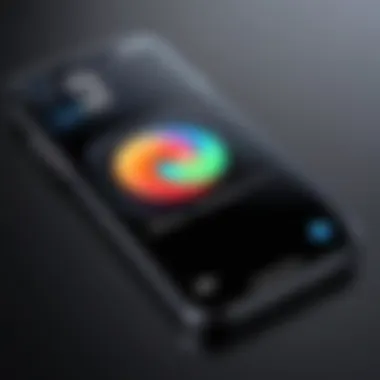

Pricing is a critical factor when considering a smartphone purchase. In the cases of the iPhone 13 and iPhone 13 Pro, understanding the pricing structure can inform consumers about what they can expect and guide their decisions based on their budget. This section breaks down the pricing elements related to the base models, storage upgrades, and resale values, highlighting their importance in evaluating value for money.
Base Model Pricing
When assessing the iPhone 13 and iPhone 13 Pro, the base model pricing is a key area of comparison. The iPhone 13 starts at a lower price point, making it more accessible for a wide range of consumers. Its affordability appeals to those who desire an iPhone but do not require the advanced features of the Pro model. On the other hand, the iPhone 13 Pro has a premium price that reflects its superior materials, enhanced camera systems, and additional features such as ProMotion display technology.
Here are the starting prices for the base models:
- iPhone 13: $699
- iPhone 13 Pro: $999
This difference of $300 signifies a notable leap in features and specifications. For many buyers, this is less about the total cost of ownership and more about the perceived value each model offers.
Pricing for Storage Upgrades
Both iPhone 13 and iPhone 13 Pro provide various storage options, which can significantly affect the overall price. The iPhone 13 offers three storage sizes: 128GB, 256GB, and 512GB, while the iPhone 13 Pro offers the same options but adds a 1TB variant. The price increases accordingly with storage capacity.
Here's a brief overview of storage pricing:
- iPhone 13: 128GB ($699), 256GB ($799), 512GB ($999)
- iPhone 13 Pro: 128GB ($999), 256GB ($1,099), 512GB ($1,299), 1TB ($1,499)
Choosing the right storage is essential, especially for users who frequently store large files like videos or games. The iPhone 13 Pro's higher capacity, particularly the 1TB option, is particularly appealing for power users, albeit at a steeper price.
Resale Value Predictions
The resale value of a smartphone can often determine its long-term cost-effectiveness. Both the iPhone 13 and iPhone 13 Pro are expected to hold their value well compared to competition in the market. Factors contributing to the high resale value include brand loyalty, the quality of materials, and product demand.
Experts predict the following resale values after one year of use:
- iPhone 13: Approximately 70% of original price.
- iPhone 13 Pro: Approximately 75% of original price.
Higher resale value means that owners can recuperate a larger portion of their initial investment when upgrading in the future. Thus, both models can be seen as solid investments, with the Pro variant providing a slight edge in resale performance.
User Experience and Feedback
User experience is essential when considering any smartphone, particularly in comparing the iPhone 13 and iPhone 13 Pro models. A phone should not only deliver robust features but also ensure a smooth and satisfying overall experience to justify its price. Critical elements include usability, satisfaction, and how well the devices meet users' needs.
Both models are designed for convenience and efficiency. However, subtle differences can significantly impact daily use. For instance, the Pro model offers enhanced functionality due to its additional features. This difference in experience is relevant for tech-savvy individuals who prioritize performance alongside aesthetics.
Consumer Reviews
Consumer feedback plays a pivotal role in shaping perceptions of the iPhone 13 and iPhone 13 Pro. Reviews provide insights from actual users, shedding light on the everyday experiences of owning these devices. Detailed reviews often highlight aspects such as battery life, camera performance, and software stability.
- Battery Life: Many users appreciate the iPhone 13’s battery longevity, particularly for social media, videos, and games.
- Camera Performance: Users often commend the Pro model for superior low-light capabilities and versatile shooting modes.
- Software Experience: Both models run the same iOS version, yet the Pro advantages, such as ProRAW, delight photography enthusiasts.
Often, consumer reviews on platforms like Reddit showcase group discussions, where users exchange thoughts about their experiences. This peer feedback can significantly influence a purchasing decision, making it indispensable for potential buyers.
Expert Analysis
Expert analysis offers a deeper understanding of the iPhone 13 and iPhone 13 Pro. Technology reviewers and analysts assess the devices against industry standards, exploring aspects that go beyond basic user feedback.
- Hardware Performance: Experts typically note that the Pro model's A15 Bionic chip with a 5-core GPU delivers superior graphics performance.
- Camera Technology: Reviews mention how the Pro’s triple-camera system exceeds that of the iPhone 13, particularly in versatility and image quality.
"Understanding the nuanced differences in performance and features is crucial for users who want the best of what Apple offers."
- Display Quality: Analysts point out that the Pro’s Super Retina XDR display caters to users demanding high-quality visuals for gaming and media consumption.
By combining opinions from users and experts, consumers can navigate their choices better, ensuring the device they select aligns with their expectations and lifestyle.
The End
In the context of this article, the conclusion elucidates the critical findings regarding the iPhone 13 and iPhone 13 Pro. By systematically evaluating design, performance, camera systems, and user experiences, the article has provided a clear demarcation between the two models. This thorough analysis plays a significant role in guiding potential buyers through the complexities of smartphone technology.
Understanding the distinctions helps users make informed decisions based on their specific needs and preferences. For those who require high efficiency in multitasking or advanced photography capabilities, the iPhone 13 Pro emerges as a compelling choice. Conversely, individuals seeking reliability in daily tasks may find the iPhone 13 more aligned with their requirements.
Moreover, while both models deliver a strong user experience, the emphasis on unique features such as ProMotion technology and premium materials in the Pro version decides its pricing and target audience. This examination not only influences purchasing decisions but also sets a benchmark for future innovations in the smartphone marketplace.
Final Thoughts
At the intersection of sophistication and functionality, the iPhone 13 and iPhone 13 Pro offer varied benefits that cater to distinct user profiles. The choice between these two devices is not merely about specifications but also about how those specifications translate into real-world usage.
In summation, technology enthusiasts and casual users alike benefit from recognizing the nuanced differentiations. Stay informed, and choose wisely.







